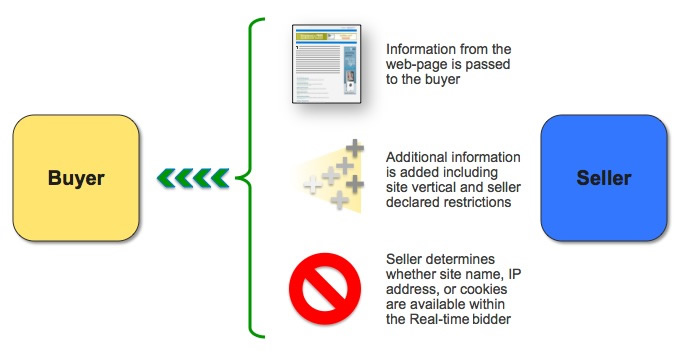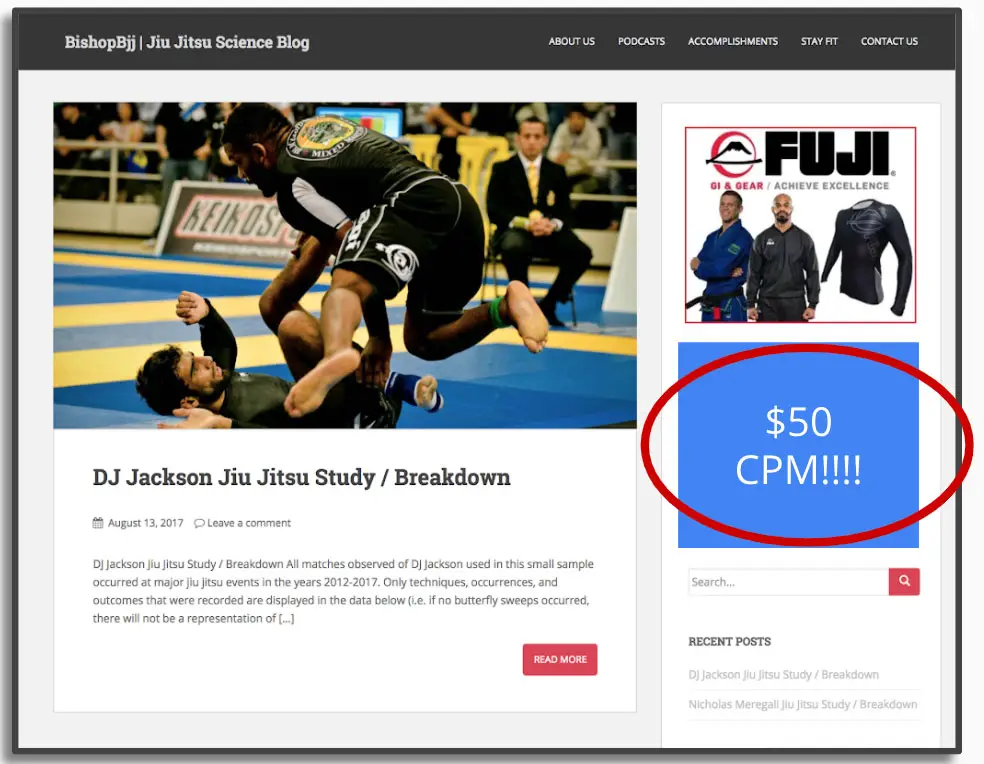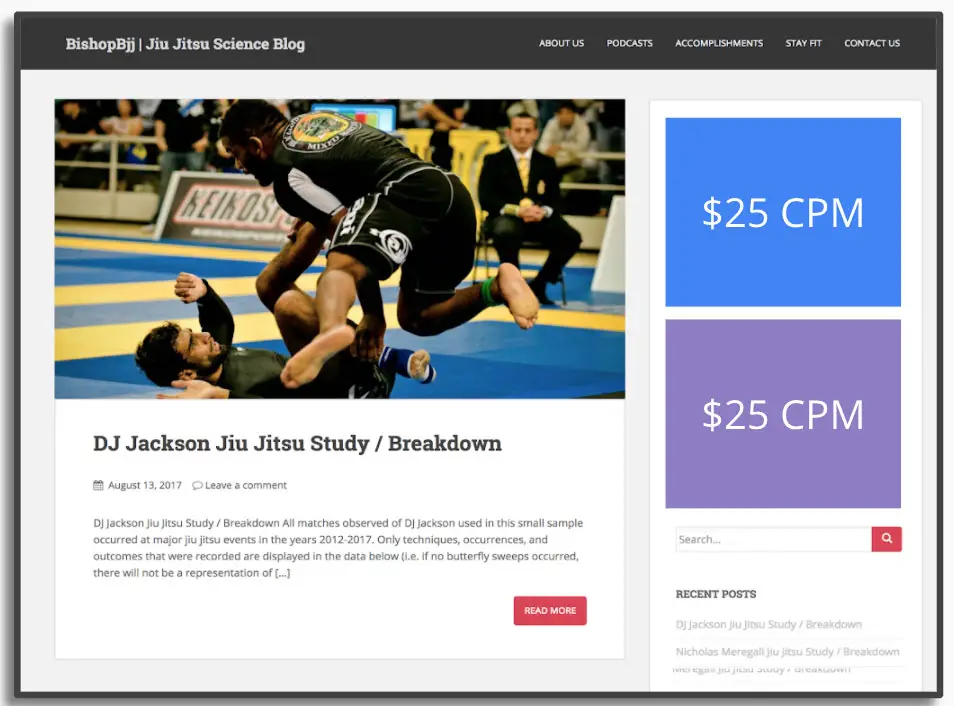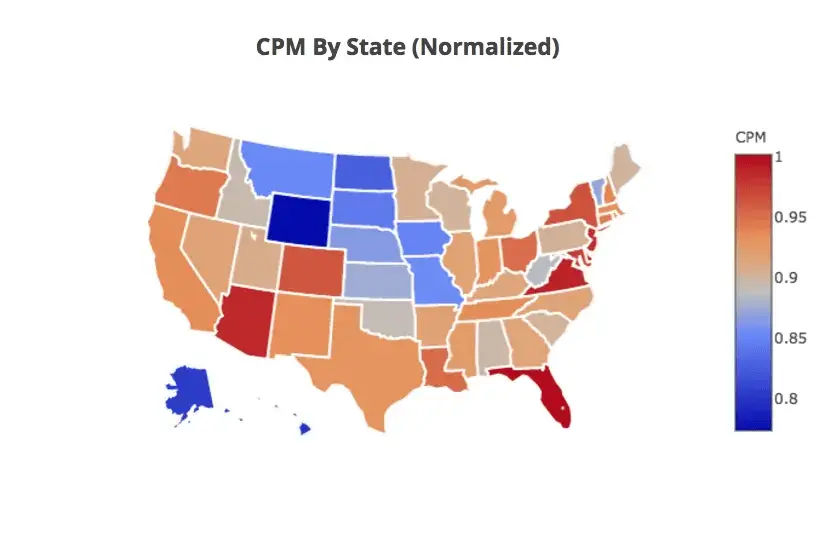Before automated ad exchanges, ad networks in the 2000s would manually adjust pricing based on supply and demand (kind of like a stock trading floor). This process changed to an automated price based on a real-time price (real-time bidding). Real-time bidding was the start of ad network decline and the beginning of ad exchanges as the most efficient way of determining prices.
But many publishers want to know: what is real-time bidding, and why is it important to understand the basics of how it works?
We also have a video available that walks through what real-time bidding is:
What is real-time bidding?
Real-time bidding (RTB) is a server-to-server integration option for network buyers that allows networks to evaluate and bid on each available impression. It is available to any Ad Exchange buyer that has its own ad server or bid engine. This technique powers programmatic auctions that take place in the blink of an eye. When an advertiser wins a bid, that ad is displayed on a publisher’s website instantaneously.
A simpler way to think about real-time bidding:
Real-time bidding = the technique that powers programmatic advertising.
How does the real-time bidding (RTB) protocol for ads work?
Below is a diagram from Google on how the real-time bidding protocol works.
- Information from the web page is passed from the seller to the buyer
- Additional information is added including site vertical and seller declared restrictions
- Seller determines whether site name, IP address, or cookies are available within the real-time bidder

What’s important to remember is: Ad demand sources do not control the value (or worth) of the ad space (inventory) a publisher is selling.
They can simply provide a price that an advertiser is willing to pay for a visitor based on historical site data. This data is collected in the real-time bidding protocol in cases of programmatic advertising.
Who uses the RTB protocol?
Both buyers and sellers of programmatic advertising use real-time bidding. Anyone who’s participating in a programmatic ad auction is participating via real-time bidding (RTB). This can include Google, demand partners, header bidding, etc.
Authorized Buyers currently supports three RTB protocols:
- Google protocol
- The original Authorized Buyers-proprietary protocol.
- OpenRTB (Protobuf)
- An implementation of the OpenRTB specification using Protobuf.
- OpenRTB (JSON)
- An implementation of the OpenRTB specification using JSON.
What data does Google’s real-time bidding use?
Google’s real-time bidding uses historical data from your website to determine the value of your ad inventory. This value then becomes the cost to advertisers who win the bid for that ad space on your website. Typically, these costs to advertisers are defined in CPMs, CPCs, and CPAs. These programmatic auctions happen instantaneously when a visitor arrives at your site.
Since Google’s real-time bidding that powers programmatic advertising is based on historical data, this is where publishers have to be careful.
For example: Take this ad below that I’m getting a $50 CPM on, I may decide to test to see if adding another ad unit improves my revenue. Since all programmatic advertising is based on historical data, I’m likely to get another $50 CPM in this sidebar location. Right?

Unfortunately, all ads dilute one another. This meaning that the $50 value the ad space had will likely deteriorate. In turn, the historical bidding data will change and advertisers will have bids automatically adjusted to compensate.
Now each ad is only worth $25 to the same advertiser.

It’s the same amount of money, but twice the number of ads. This is why it’s important for publishers to be wary scammy players in the ad industry who might try to siphon off the value you’ve created. Even if they don’t have mal intent; Some Ad Ops shop might throw the maximum allowable number of ads on your page to make you more money.
But here’s the problem. While that strategy might boost your earnings in the short term, ad dilution will soon rear its ugly head. The laws of supply and demand occur for ad inventory as well. The more available spaces for advertisers, the less advertisers will bid over time. The reverse is also true.
Can publishers leverage RTB data to their advantage?
Yes. Publishers can leverage RTB data to their advantage. While real-time bidding is just a “technique” that all programmatic advertising operates on, the data from these auctions over time can reveal opportunities.
Publishers need to ask themselves: What type of data do advertisers use to bid on the ad spaces on my site? Some of that data is made up of demographics, geographic location, device type, and more.
For example: according to the graph below, CPMs in Florida are higher than in Wyoming. Visitors from Florida are more valuable to advertisers than visitors from Wyoming. So advertisers might adjust their bids lower for organic visitors coming from a Laramie zip code, and increase them for a Cape Canaveral zip code.

So how can publishers take advantage of the knowledge this data brings? Publishers can adjust their ads based on these variables (and many more) to increase advertiser bids when they know the demand a higher for certain visitors.
Another great example of this is how 300×250 ads typically see a large number of advertisers bidding on them in the USA. On the other hand, 250×360 ad sizes are very common and highly competitive among Swedish advertisers.

Publishers can test these variables themselves. But testing even a couple of these variables on a per-user, per visit basis, would take a whole team of people weeks or even months to record results and implement changes. Additionally, by the time changes are implemented, they might see diminishing returns for their efforts.
Why is this? Since the variables affecting how advertisers bid are always changing, the tests have to change too.
How do cookies impact real-time bidding?
Cookies impact real-time bidding in the current ecosystem because it’s how advertisers specify the audience they want to target.
So when advertisers bid on a certain parameter (i.e. age, gender, cookies, retargeting, etc), all of that info is stored via a cookie. But that might not be the case in a future where the 3rd-party tracking cookie might not exist. How would a cookie-less future work for advertisers?
Data would be shared in an anonymous bidding setting that would allow RTB to happen with user data. But that wouldn’t be shared outside the auction. (I.E. — Google, the publishers, the advertisers, no one would actually see the data), but they could still bid on the audience.
Wrapping up real-time bidding and what it means for publishers
Real-time bidding technology is the backbone of programmatic advertising. If you’re a publisher and use Google AdSense, ad tech, or anything else that populates display ads on your website, it’s powered by the real-time bidding protocol.
The fact of the matter is: advertisers treat all visitors differently when they bid on ads, so why don’t publishers do the same?
If publishers show the same number, sizes, and type of ads to the many different visitor behavior attributes, geographic locations, device types, that make up their visitor base, that’s a lost opportunity to improve visitor experiences. And improving visitor experiences objectively improves ad revenue.

Ezoic’s Ad Tester uses the power of machine learning to test thousands of combinations of variables on a per-user, per visit basis.
Real-time bidding occurs instantaneously in the programmatic ecosystem. A technology like Ezoic’s Ad Tester mirrors that environment and test these variables continuously and is an effective strategy to grow your website. If you improve visitor experiences, visitors will likely engage with your content longer. Those visitors then become more valuable to advertisers. More valuable visitors equates to more ad revenue for publishers.
Do you have any questions on how real-time bidding works? Let me know in the comments.


